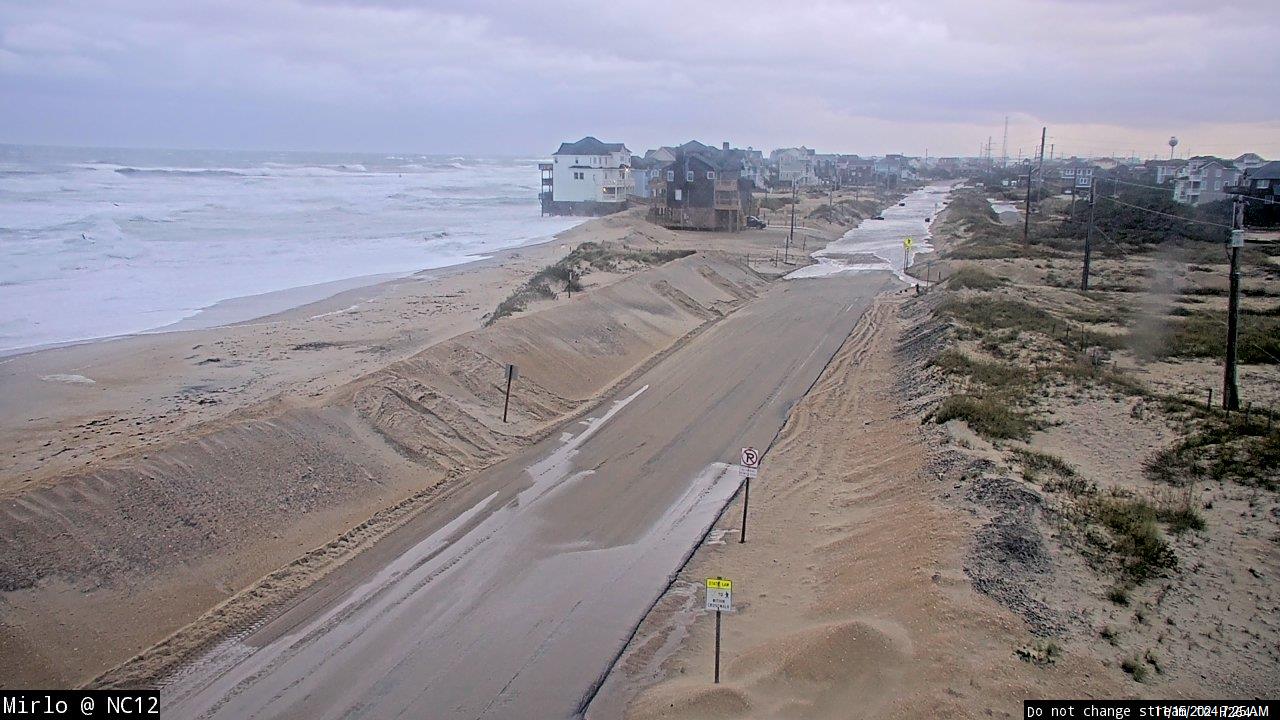Ocracoke Real Estate: Owning your own business
By B.J. OELSCHLEGE
By B.J. OELSCHLEGE
This commentary is a partial reprint of an article I wrote several years ago. At the time, the column was a response to what I felt was a neighbor’s lack of understanding of the complexities of starting a business.
With the flood of tourists each summer, it looks easy and profitable to open a business. However, the reality can be quite different. A legitimate business has multitudes of hoops through which the owner must jump. The hoops range from regulatory issues to accounting to employees.
On Ocracoke, a homeowner has the opportunity to use 400 square feet of his or her residence for commercial purposes without needing to abide by all of the commercial regulations in the Ocracoke Building Ordinance. This “cottage industry” option is probably the path of least resistance when it comes to housing certain types of small businesses, but it is not the story for most of the commercial spaces on the island.
The bulk of us have had to create a business plan, no matter how informal, and test the feasibility of our idea. Careful examination of the rules, regulations, and necessary licenses is prudent before expending any more time or energy on the budding idea.
When a business opens its doors, the public trust is a primary responsibility and, therefore, a major hoop. North Carolina, as with all states, has regulations that are meant to protect the public. The retail owner has the responsibility to the public to be aware of and to abide by those regulations. Building codes are created for the safety of the public and to provide a consistent and enforceable guideline for the use of property within a particular township.
One example of a critical portion of The Ocracoke Building Ordinance is the very volatile subject of parking. There must be the required parking for your customers. Two spaces are necessary for the first 200 square feet of floor area and one for each additional 200 square feet.
Keep in mind the need to observe all building codes, apply for a building permit, and get inspected by the county building inspector. The county health inspector might need to review your plans if food is involved and or on the issue of providing bathroom facilities for your employees. Once the regulatory stuff is in place, the proprietor will have crossed one of the hardest hurdles.
The question of sole proprietorship or some other form of business entity brings a lawyer into the picture to legally set up your business structure.
Looking for a location is a “big” one. Commercial rents on the island are running between $10 and $27 a square foot, depending on the location and the fixtures provided. Once you’ve secured the space, with the first month’s rent and security deposit, you need to set up the utility accounts. A checking account provides a safe depository for the daily income, along with the ability to track the income and expenses.
The business owner needs to apply for a license to collect and pay sales and use tax. The state of North Carolina has legislated that the sale of an item or the rental of a piece of equipment requires the business owner to collect, report and pay a 7.75 percent tax on every dollar of income.
Insurances need to be considered. To start the list we have workman’s compensation, fire/personal property, public liability, and business loss insurance. The premiums for these are based on payroll, inventory value, or income. An accountant can be helpful when it comes to getting started with keeping good and useful business records. These records are critical at tax time.
Some degree of carpentry may be required to bring the floor plan into consistency with the picture you have of the flow of the business traffic. Equipment purchases are necessary to display or make your goods. Vendors, or suppliers, of your goods or their ingredients need to be researched and secured. Not all vendors are willing to make the long trek down the Outer Banks to the island. Don’t forget signage and advertising and the permits required to even install the signs. A website or Facebook page isn’t a bad idea. What about a cash register? And you haven’t even opened your doors yet.
Whew! I’m tired just thinking about what it takes to get started.
The absolute “biggest” factor in the start up of a business is the capital. Getting your foot in the door requires funds to pay for all of the services, equipment, and inventory necessary to give your business a good face. You either have to have a rich family, a really fat mattress, or the ability to borrow. A line of credit can be invaluable as start-up cash but also a godsend when a hurricane blows a hole in the stream of tourists.
Hurricane Isabel in 2003 provided a lesson in patience and faith. The long delay in being able to open up the island and then the trickle of business afterwards made most business fearful.
The ability to borrow is one half of the capitalization question. The ability to repay is the other half. Borrowing only goes so far. A business owner can learn from year to year how to streamline his or her operation, but there is no guarantee that the weather, or the economy or any one of the many choices that you have made in preparation for the season won’t work negatively to affect your ability to pay your bills, including loan payments, and have something left over for living.
There are the hoops of all of the state and federal requirements, if employees are going to be involved. We start out thinking that we can do it all ourselves, and, of course, that doesn’t last through the first season. We ultimately need to set up payroll records and arrange for the assortment of liabilities that lie in wait for the employer.
The state and federal governments obligate the employer to report and pay different taxes. Out of every paycheck, the employer has to withhold a portion of state and federal taxes. Quarterly, the employer has to turn the withheld sums over to the respective agencies, along with matching sums out of the employer’s pocket.
We haven’t even mentioned the Employment Security Commission that requires the employer to pay out of pocket a percentage of the gross payroll to fund federal unemployment insurance. The State unemployment agency takes its percentage every quarter also. Employees do not pay into their own unemployment. All the money available for winter unemployment is paid by employers. I guess you can tell that unemployment is a sensitive issue. Every time the insurance gets used, the rate goes up.
That’s the money side of having employees. Then there is the challenge of trying to get a disjointed group of people to work together happily, follow your directions, use some common sense, see things the way you do, respect the money that you are trying to make to pay the bills, present your face to the public, work the way you do, and generally be courteous. And there are the departure dates for college that do not coincide with the end of the season, the “no shows” who had something better to do that day, the personality conflicts that require mediation, or the employees who really didn’t have a place to live or bathe. Having employees demands many skills and is yet another big hoop.
The owning and running of a business is a serious step to take. Hard work over a long period of time and a line of credit as a safety net are critical factors in the success of any business. The variables, not within our control, make it tenuous, at the least. With so much at stake, business has to be based in the “black and white,” the bottom line.
I personally love the challenge of making it work and the chance to creatively grow a business. Ah, but the hoops.
(B.J. Oelschlegel has lived on Ocracoke Island for more than 30 years and has worked in the real estate business for 26 years. She is a broker with Ocracoke’s Lightship Realty and a real estate columnist for The Ocracoke Observer. You can reach her by e-mail at bj@ocracokelightshiprealty.com)
Subject
Name
(required, will not be published)
(required, will not be published)
City :
State :
Your Comments:
May be posted on the Letters to the Editor page at the discretion of the editor.
May be posted on the Letters to the Editor page at the discretion of the editor.
May be posted on the Letters to the Editor page at the discretion of the editor.
May be posted on the Letters to the Editor page at the discretion of the editor.



































